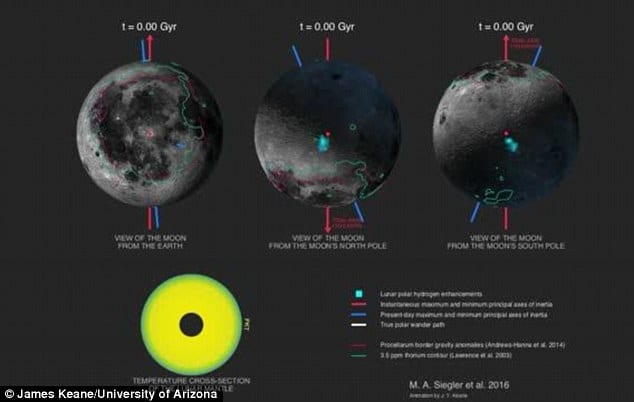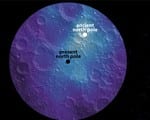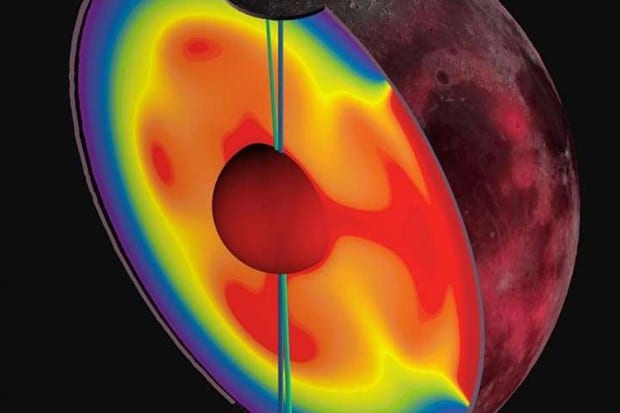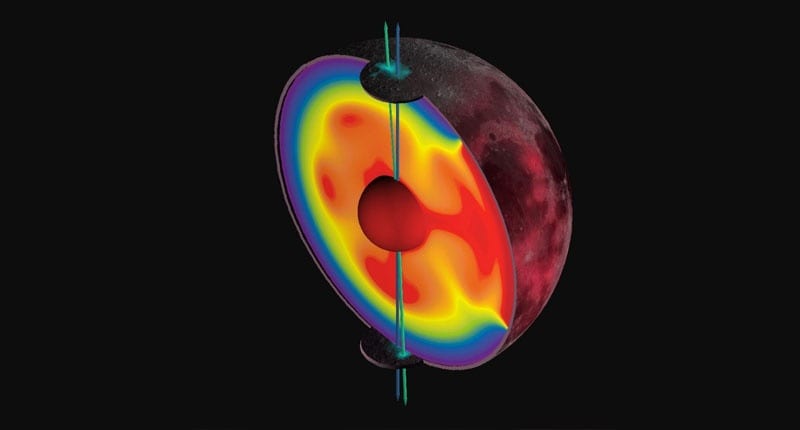Science reporter Richard Gray with The Daily Mail covered the research of SMU planetary scientist and research assistant professor Matthew Siegler and a team of scientists who discovered the moon wandered off its axis billions of years ago due to a shift in its mass most likely caused by volcanic activity.
The article, “Earth’s moon threw a ‘wobbly’ after it formed: Lunar poles wandered 125 MILES as volcanic bubbles threw them off balance,” published March 23. A report on the discovery of the rare event was published today in Nature: that Earth’s moon slowly moved from its original axis roughly 3 billion years ago.
EXCERPT:
By Richard Gray
The Daily Mail
They are among the coldest places in the solar system, covered in deposits of ice that are thought to be billions of years old.But the moon’s north and south poles may have shifted during its 4.53 billion-year history, according to evidence uncovered in a new study.
A team of astrophysicists claims to have found distinct matching patches of ice at either pole that indicate the tilt of the Earth’s satellite has changed as it has aged.
They said this may have occurred as the interior of the moon cooled and solidified, while other areas bubbled upwards, altering the spin of the rocky world.
The authors explained that volcanic activity in an area known as the Procellarum region around three billion years ago threw the entire moon off balance, causing it to shift its axis by around six degrees.
This caused the moon’s poles to move by around 125 miles (201km) over the course of a billion years.
Dr Matt Siegler, a planetary scientist at the Southern Methodist University in Dallas, who was part of the team to make the discovery, said: ‘Billions of years ago, heating within the Moon’s interior caused the face we see to shift upward as the pole physically changed positions.
‘It would be as if Earth’s axis relocated from Antarctica to Australia. As the pole moved, the Man on the Moon turned his nose up at the Earth,’ Siegler said.
Dr Siegler and his colleagues used data gathered by Nasa’s Lunar Reconnaissance Orbitor which has mapped the hydrogen deposits around the moon’s poles.
They found the polar hydrogen reserves, which are thought to be in the form of water ice in craters, are spread over distinct but matching patterns on either side of the moon.
The researchers said this suggests the lunar spin axis must have shifted, causing the polar regions to become displaced.
This left a permanent record painted out on the surface in ice.Relatively few planetary bodies are thought to have shifted their axis after forming.
The Earth, Mars, Saturn’s moon Enceladus and Jupiter’s moon Europa are the only others known to have done so.
On Earth, polar wander is thought to have happened as the continental plates have shifted the mass of the planet while on Mars it occurred due to heavy volcanic region.
Follow SMUResearch.com on twitter at @smuresearch.
SMU is a nationally ranked private university in Dallas founded 100 years ago. Today, SMU enrolls nearly 11,000 students who benefit from the academic opportunities and international reach of seven degree-granting schools. For more information see www.smu.edu.
SMU has an uplink facility located on campus for live TV, radio, or online interviews. To speak with an SMU expert or book an SMU guest in the studio, call SMU News & Communications at 214-768-7650.


 NASA data leads to rare discovery: Earth’s moon wandered off axis billions of years ago
NASA data leads to rare discovery: Earth’s moon wandered off axis billions of years ago Good news! You’re likely burning more calories than you thought
Good news! You’re likely burning more calories than you thought New look at Pizarro’s conquest of Inca reveals foot soldiers were awed by empire’s grandeur
New look at Pizarro’s conquest of Inca reveals foot soldiers were awed by empire’s grandeur National Center for Arts Research white paper counters findings of the Devos Institute Study on Culturally Specific Arts Organizations
National Center for Arts Research white paper counters findings of the Devos Institute Study on Culturally Specific Arts Organizations Long-term daily contact with Spanish missions triggered collapse of Native American populations in New Mexico
Long-term daily contact with Spanish missions triggered collapse of Native American populations in New Mexico


